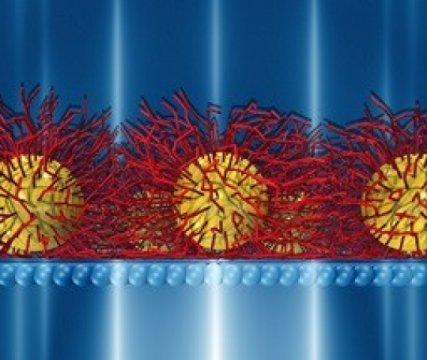Janus-like nanoparticle membranesNanoparticles are known to self-assemble at the air-water interface
Janus-like nanoparticle membranesNanoparticles are known to self-assemble at the air-water interface into large two-dimensional (2D) sheets. Researchers at Argonne National Laboratory, the University of Chicago and the University of Missouri recently discovered that an organic coating on the nanoparticles differs slightly between the two sides of the membrane. There is a tiny sub-nanometer molecular thickness difference that can guide the folding of the sheets into more complex 3D structures.Understanding the molecular origin of the Janus-like nanoparticle membrane behavior offers new design principles for creating complex artificial superstructures through nanoparticle self-assembly, with opportunities for tuning their electrical, magnetic, and mechanical properties for targeted applications in areas such as molecular separations and chemical sensing.Membranes made from nanoparticles offer versatility because both the inorganic core and the organic ligand shell composition can be tuned independently. Recent studies reveal a specific and surprising physical property of these membranes. Because nanoparticle membranes are formed at an air-water interface, the organic shell molecules on the nanoparticle surface can develop an asymmetric distribution. Qualitative evidence that this asymmetry exists comes from two experimental observations. When the membranes detach from the edge, they tend to roll into tubes upon exposure to electron beams, but always towards the water-facing side of the membrane. Furthermore, surface-enhanced Raman scattering measurements have dramatically different values between the two sides of the membrane.Read more. -- source link
Tumblr Blog : materialsscienceandengineering.tumblr.com
#materials science#science#nanotechnology#self assembly
